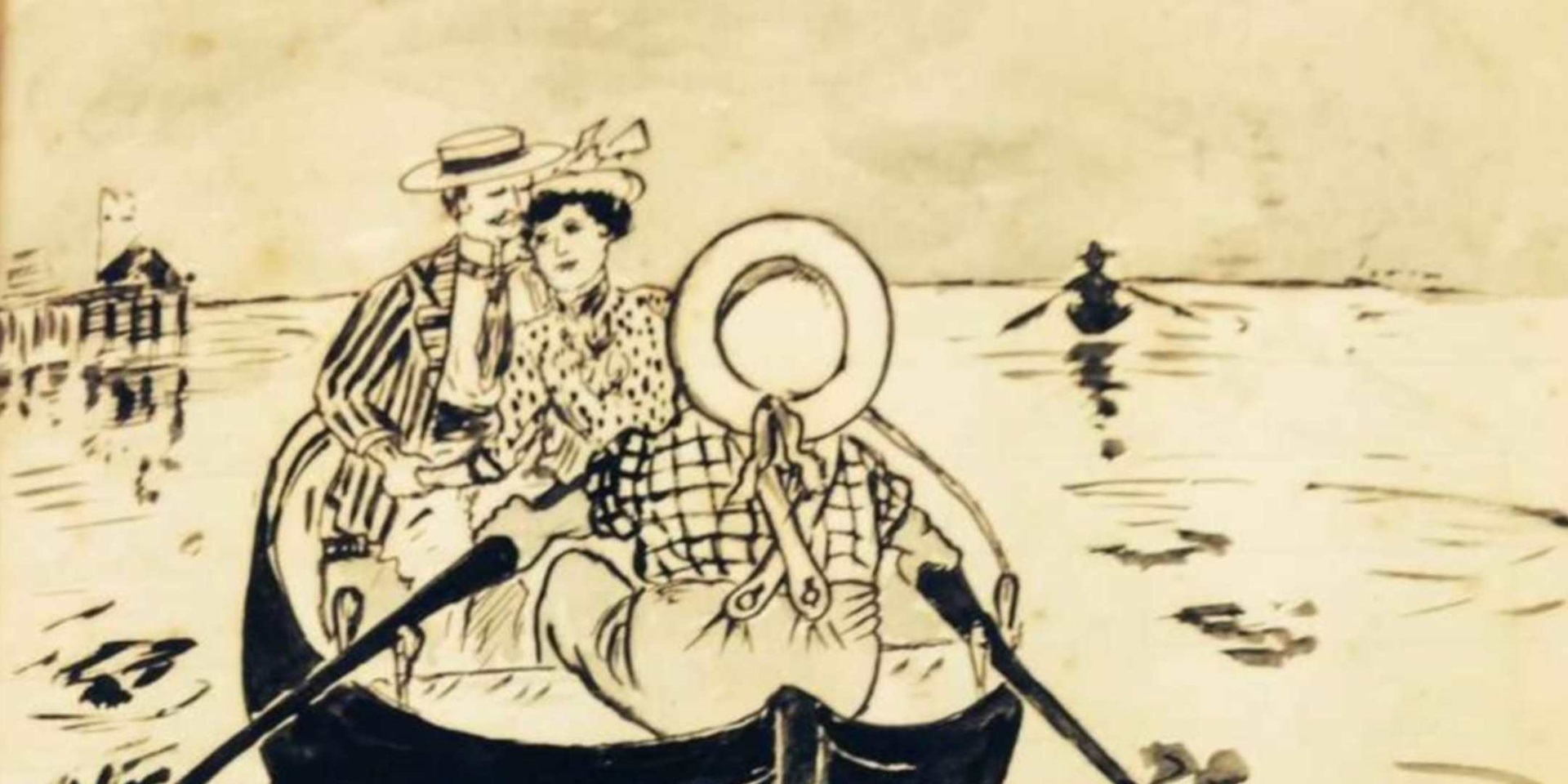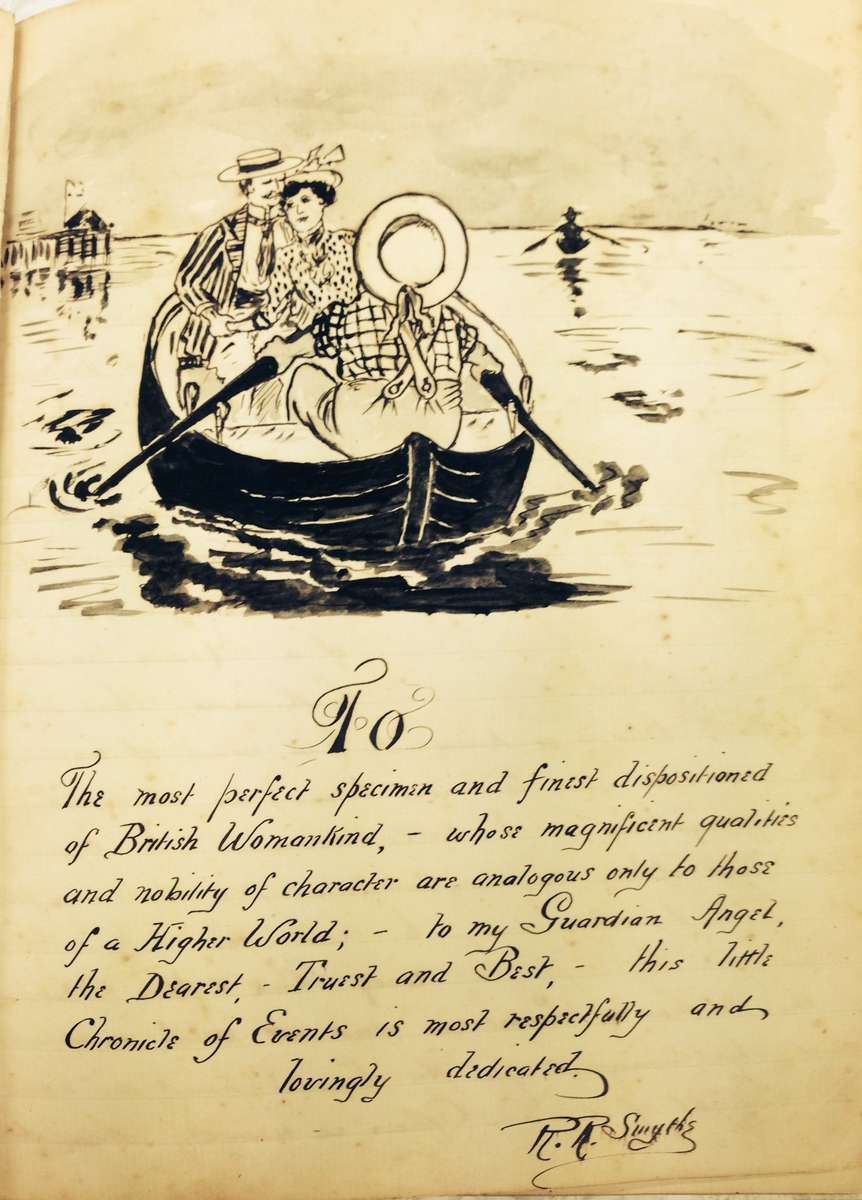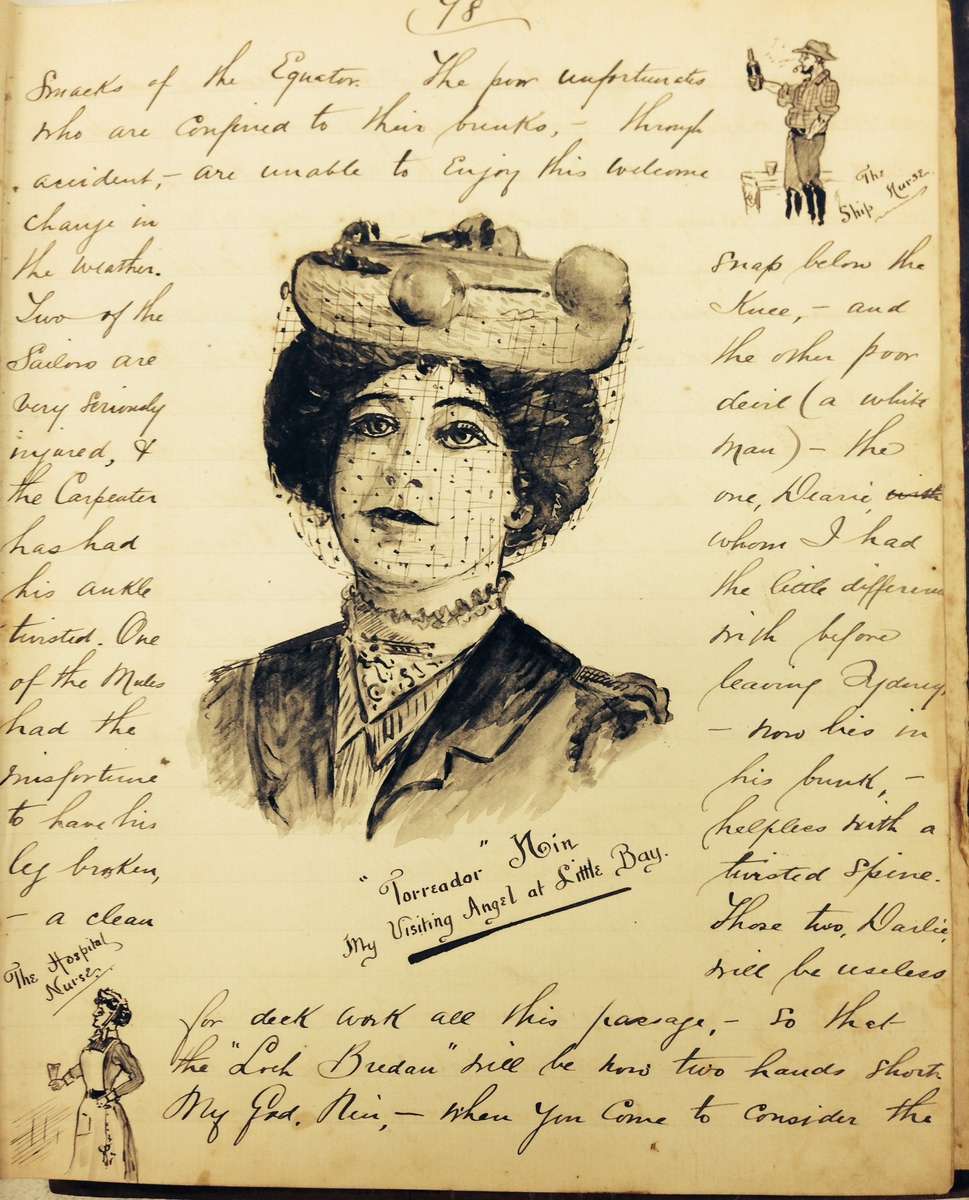

The teakwood cover of the journal of the Loch Bredan made by the ship’s carpenter from the panels of the ship’s charthouse door. The journal was written and illustrated by Chief Officer Robert Robertson Smythe, 1902.
ANMM Collection, photographs by Sabina Escobar, ANMM
The museum recently acquired the journal of the Liverpool barque Loch Bredan, by Chief Officer Robert Robertson Smythe. This wonderful logbook/journal was written and beautifully illustrated by Smythe during his 123-day voyage from Sydney to Liverpool via Cape Horn from the 25 July 1902 to 24 November 1902.
The Loch Bredan, built in 1882, was a steel-hulled barque of the ‘Loch’ ships of Liverpool owned by D&J Sproat & Co. She traded between England, Australia and New Zealand, arriving for the first time in Australia at Watsons Bay on November 1891 after a three-month journey from Antwerp, Belgium. In 1902, the Loch Bredan was forced to return to port within a fortnight of leaving Sydney on the return journey to Liverpool. During this trip, the ship ran into such severe weather that three life boats were smashed along with the charthouse’s doors.
She left Adelaide in September 1903 having picked up crew and cargo and disappeared with no scrap of wreckage ever found. Chief Officer Smythe was not on board, as he had signed off after arriving in Liverpool in November 1902. During this voyage, (the last one before its disappearance) the ship’s carpenter used the teakwood of these doors to make the covers for Smythe’s journal. These covers and the memories written on its pages are the only remaining pieces of the Loch Bredan today.

Detail from Smythe’s journal, 1902
ANMM Collection
An immense wall of water rose up suddenly on the port quarter and dashed itself against the chart house door (on the poop) smashing it in and half filing tho cabin and rooms below. Out of the panels of the door, I’m going to have covers made for this book – so that (with the log) you will have some part of the old “Loch Bredan” herself. The carpenter is a pretty handy man (from Glasgow) and the wood is teak, it ought to look not too bad.
The journal is dedicated to his wife Nim, who features in most of the illustrations:
To the most perfect specimen and finest dispositioned of British womankind, whose magnificent qualities and nobility of character are analogous only to those of a Higher World; to my Guardian Angel, the dearest, truest and best, this little chronicle of events is most respectfully and lovingly dedicated.
 Detail from Smythe’s journal, 1902 |
 Detail from Smythe’s journal, 1902 |
Smythe wrote 202 pages with detailed entries of his voyage including ship’s latitude and longitude, distances covered, weather conditions, description of daily life and tasks on board, crew members, relationships between them, food, sea sickness, the captain, but most importantly, love messages to his beloved Nim, which feature in pretty much every other page of the journal.

Detail from Smythe’s journal, 1902
ANMM Collection
There are also entries for special events such as the coronation of King Edward VII, catching a shark or the sighting of the Aurora Australis.
The Horizon to the sundown was grandly lit up with what the sailors call “The southern Lights” or in astronomical phreaseology the “Aurora Australis”. I have seen it twice before but never to a better advantage than last night 11 p.m. to 4 a.m. This beautiful circle of light lit up the ocean in a manner that would have roused the envy of all the fireworks manufacturers in the universe.
He also made a few comments on the infestation of rats on board:
If I were to say that this vessel is swarming with rodents (thousands of them) … Every day since we left Sydney – it was quite the usual thing for the Steward to catch (in gin traps) never less than six of the trashy vermin in the lazarette and store rooms – but now that we are in the tropics and Mr Rat’s supply of fresh water is a premium – he comes on deck to fossick. I’m sure, a good dozen had ramble on the poop, looking for a drink, and they have become so bold that they won’t get out of your road
Fortunately more propitious creatures also managed to sneak on board while they were crossing the Equator.
Flying fish and dolphins abound here – and in this tropics form the means of a tasty substantial breakfast – tho decks being half covered with the former every morning. Half an hour ago, Dearest, ‘Master Neptune’s’ reception of the new chums took place, (those who had never crossed the line before) – and it was very funny. This is a little side light on sea life which would have amused and interest you Nim – the rough and ready style and impromptu says being pretty cute.
This journal is the equivalent of today’s travel blogs that tell us a day to day tale of life in a foreign environment, and as such, a treasured addition to the museum’s collection that will continue to stir the imagination and sense of adventure of our visitors.

Detail from Smythe’s journal, 1902
ANMM Collection
Sabina Escobar
Assistant Registrar
The Australian National Maritime Museum invites the copyright owners of this journal and their descendants to contact the museum.